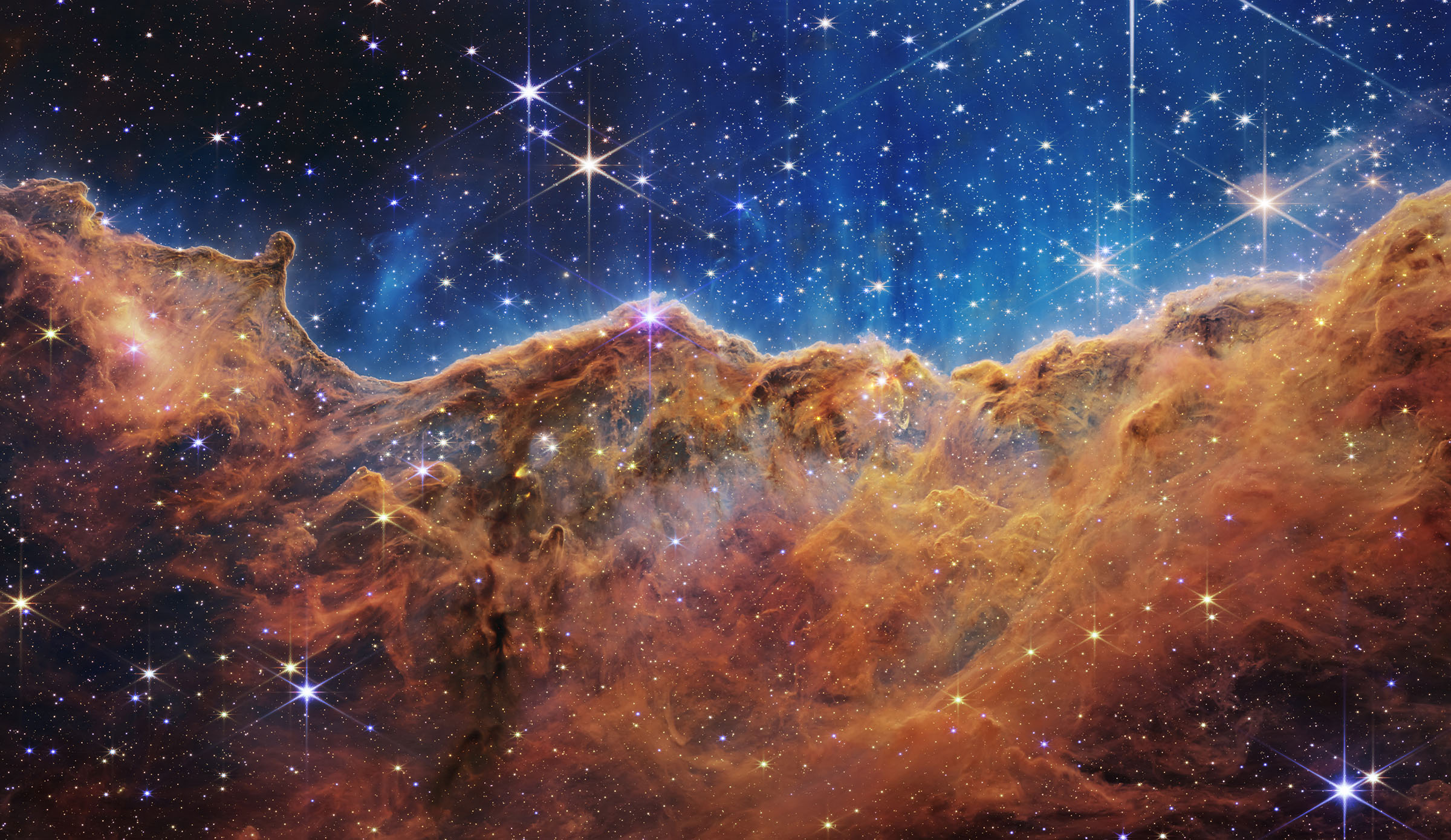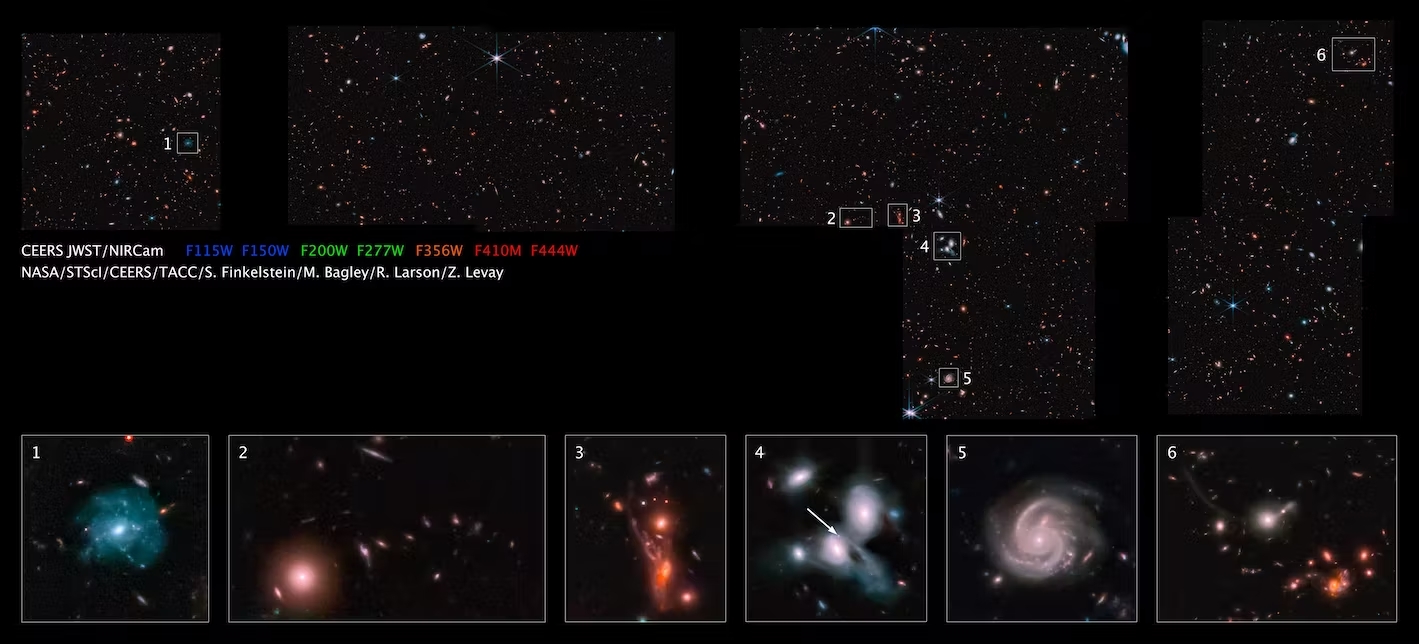See James Webb Telescope’s most dazzling photos like never before
Earlier this month, James Webb released some of its most dazzling images yet. Not only that, but NASA also shared the largest image that Webb has taken to date. The image is broken down into four panels, a mosaic of galaxies and celestial objects that Webb zoomed in on. What’s even more astounding is that James Webb and CEERS have finally given us a way to zoom in on the image ourselves.
Zoom in on James Webb’s largest image to date
The image is part of James Webb’s CEERS research, which still has six images to take before the end of December. The image is roughly eight times as large as the initial Deep-Field Image that James Webb shared on July 12, and it includes some amazing galaxies within its four panels.
As I noted above, the images are four out of ten planned images that James Webb’s NIRCam will take throughout 2022, according to EarthSky.org. These newest James Webb images captured for CEERS are centered around a patch of sky that can be found around the handle of the Big Dipper.
Multiple galaxies and other celestial objects are visible within the images, but some of the most notable include a spiral galaxy with a redshift of z=0.16. There are also plenty of blue, star-forming galaxy clusters, too. But we’ve already talked about these galaxies in our previous release coverage. What’s important about these James Webb CEERS images is how you can zoom in.

If you head to the CEERS website, you can pull up a zoomable version of the James Webb CEERS survey. If you download the high-res version, you can zoom in drastically. This will give you a greater look at the detail that James Webb can capture. James Webb has captured a very unique set of images. And, I can’t wait to see how it comes together with the other six James Webb will take in December.
Taking these massive, detailed photos is part of what makes James Webb so distinguishable. Additionally, because the space telescope utilizes infrared light signals, it can also detect carbon dioxide on exoplanets. The James Webb and the CEERS project will unlock some amazing information about our universe together. And, the best part is, we don’t have that long to wait for these instruments to do so, either.
Earlier this month, James Webb released some of its most dazzling images yet. Not only that, but NASA also shared the largest image that Webb has taken to date. The image is broken down into four panels, a mosaic of galaxies and celestial objects that Webb zoomed in on. What’s even more astounding is that James Webb and CEERS have finally given us a way to zoom in on the image ourselves.
Zoom in on James Webb’s largest image to date

The image is part of James Webb’s CEERS research, which still has six images to take before the end of December. The image is roughly eight times as large as the initial Deep-Field Image that James Webb shared on July 12, and it includes some amazing galaxies within its four panels.
As I noted above, the images are four out of ten planned images that James Webb’s NIRCam will take throughout 2022, according to EarthSky.org. These newest James Webb images captured for CEERS are centered around a patch of sky that can be found around the handle of the Big Dipper.
Multiple galaxies and other celestial objects are visible within the images, but some of the most notable include a spiral galaxy with a redshift of z=0.16. There are also plenty of blue, star-forming galaxy clusters, too. But we’ve already talked about these galaxies in our previous release coverage. What’s important about these James Webb CEERS images is how you can zoom in.

If you head to the CEERS website, you can pull up a zoomable version of the James Webb CEERS survey. If you download the high-res version, you can zoom in drastically. This will give you a greater look at the detail that James Webb can capture. James Webb has captured a very unique set of images. And, I can’t wait to see how it comes together with the other six James Webb will take in December.
Taking these massive, detailed photos is part of what makes James Webb so distinguishable. Additionally, because the space telescope utilizes infrared light signals, it can also detect carbon dioxide on exoplanets. The James Webb and the CEERS project will unlock some amazing information about our universe together. And, the best part is, we don’t have that long to wait for these instruments to do so, either.
